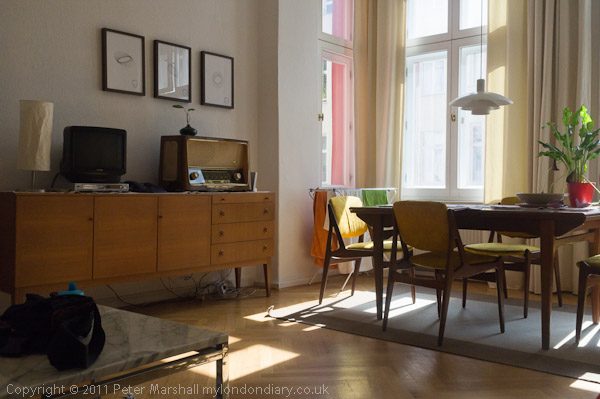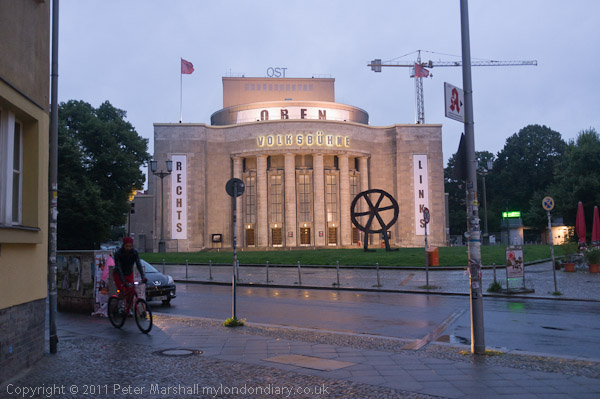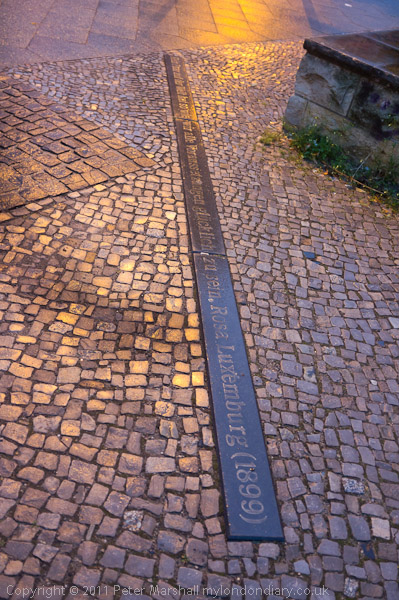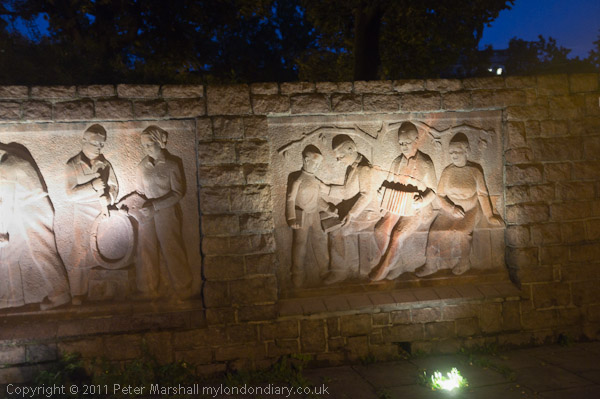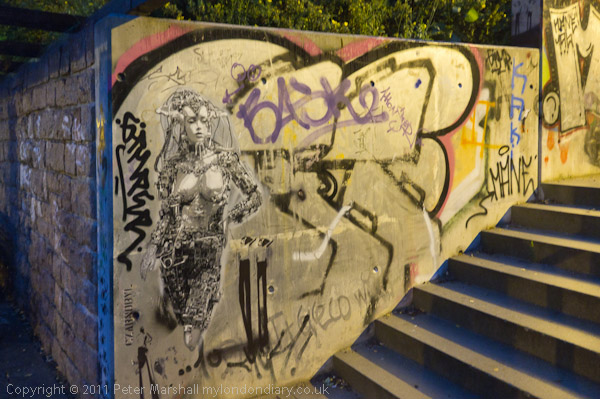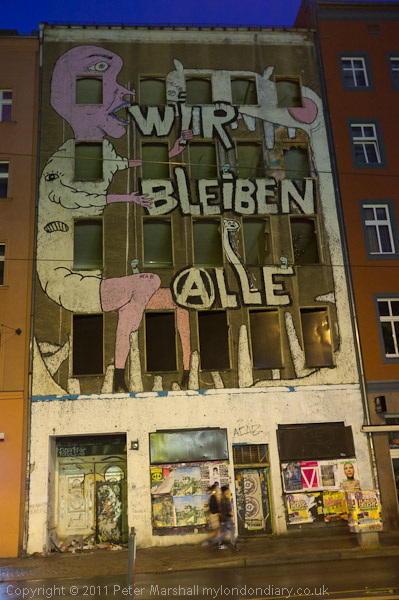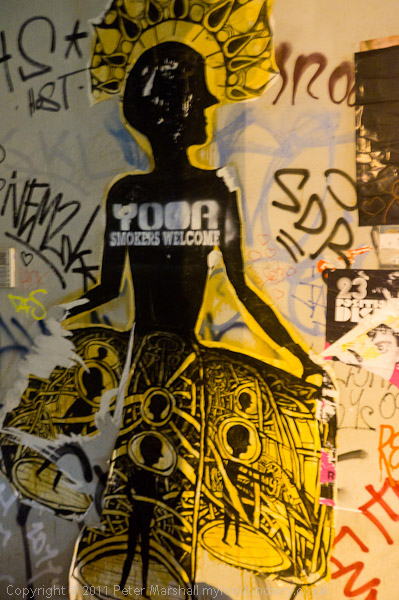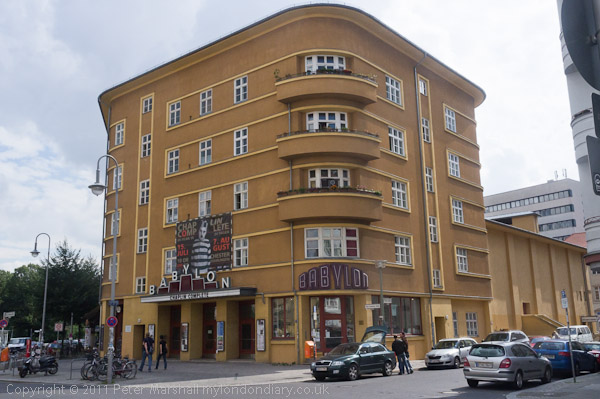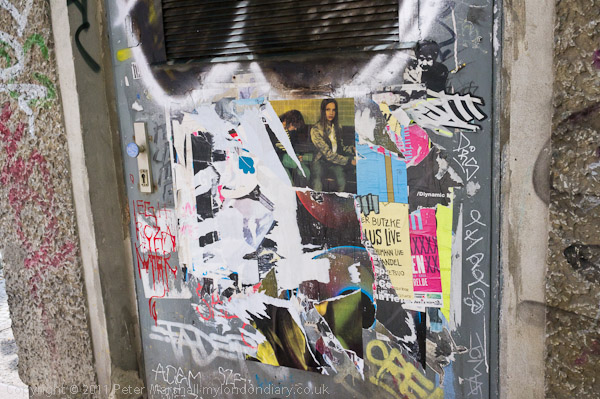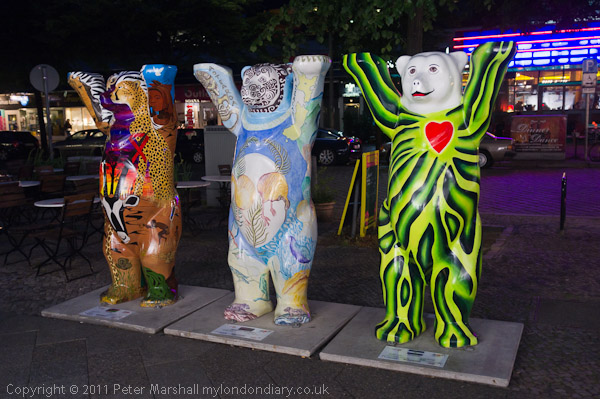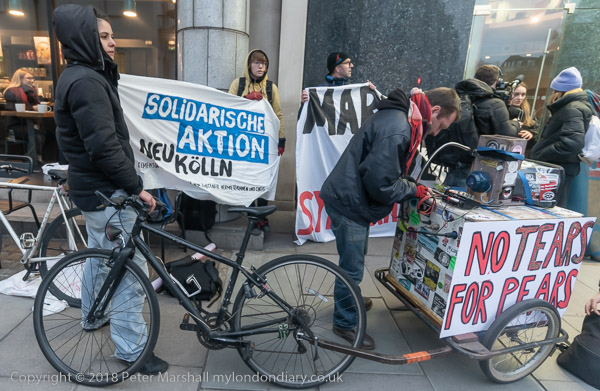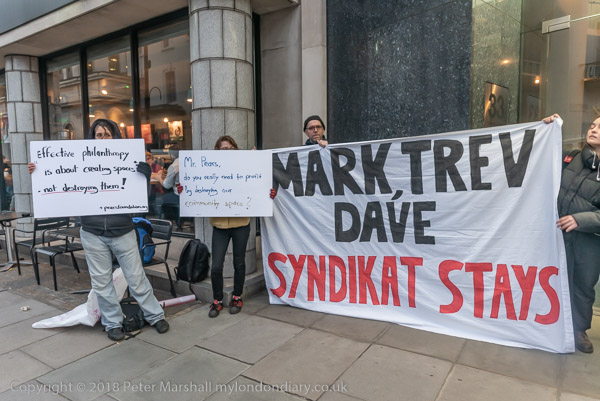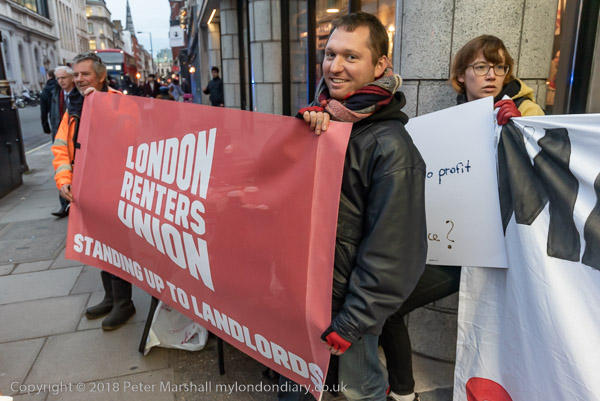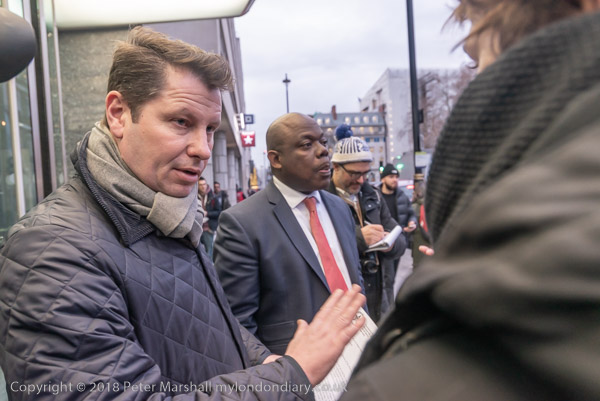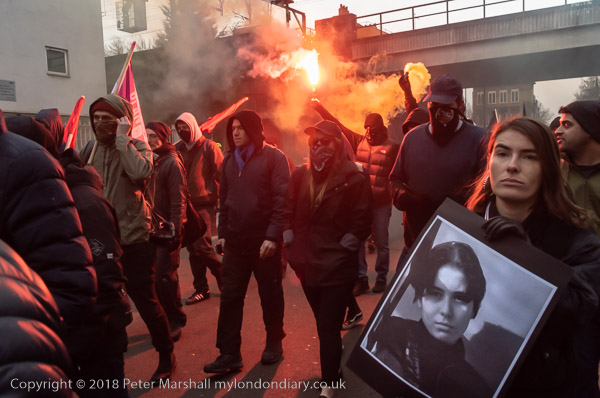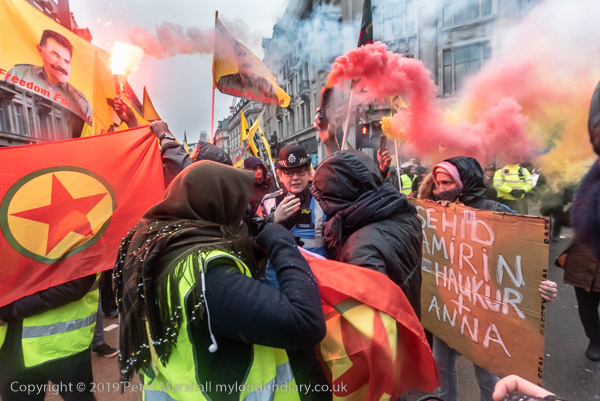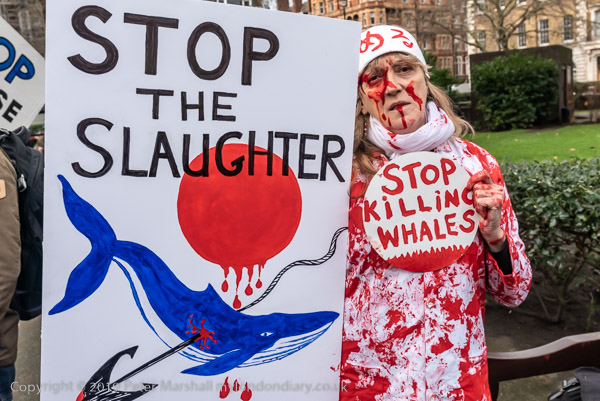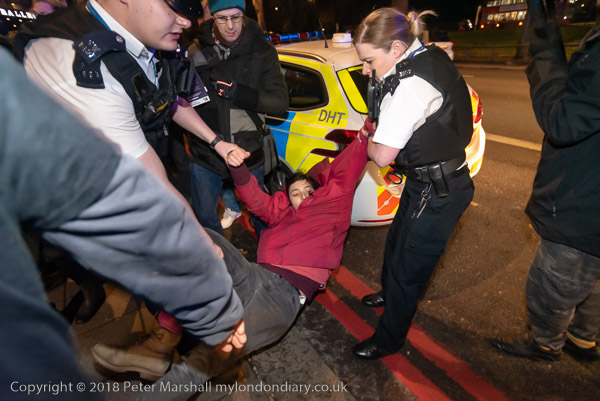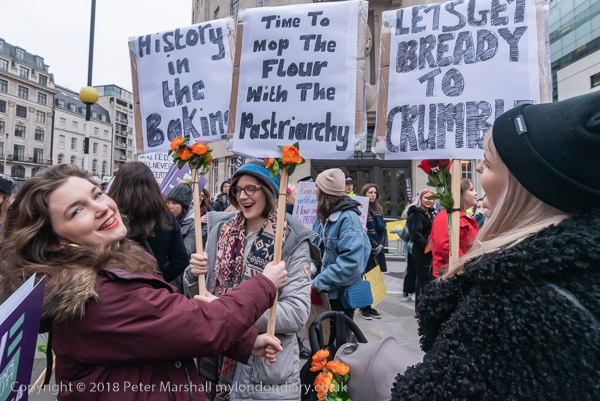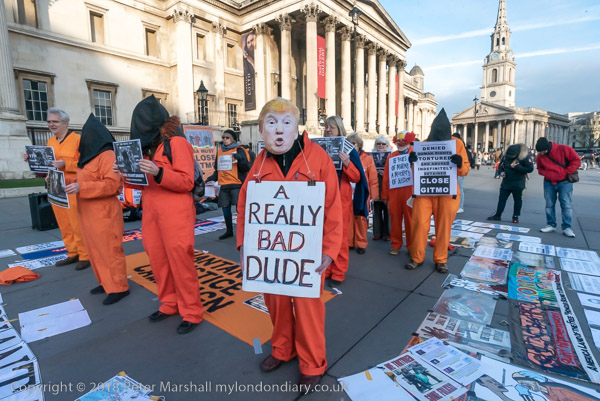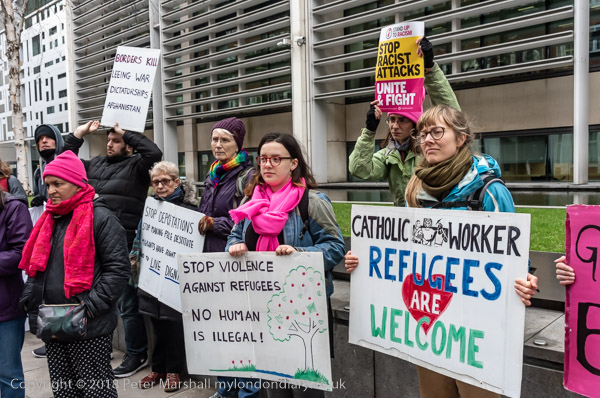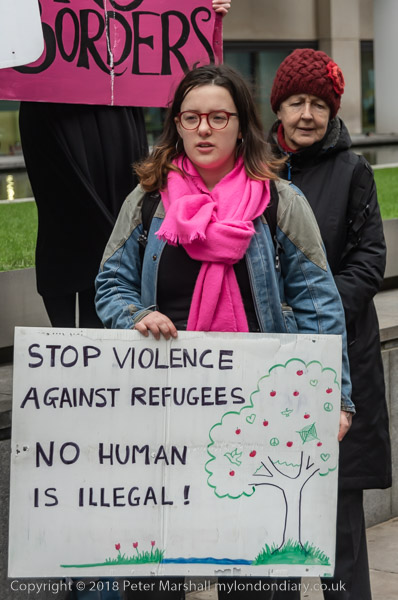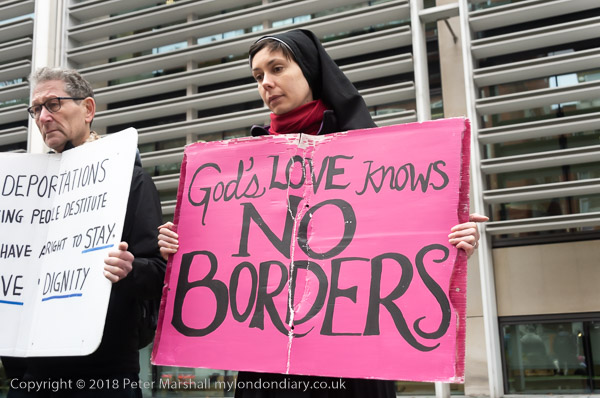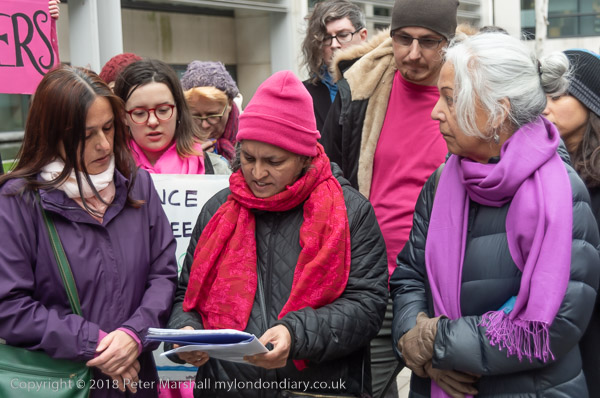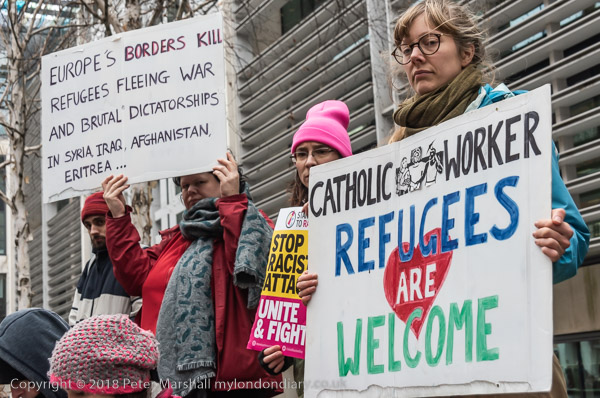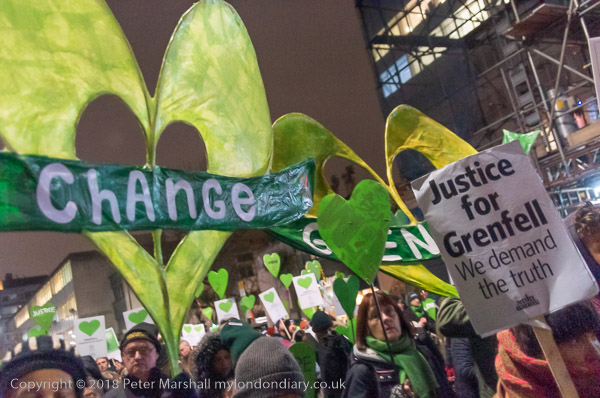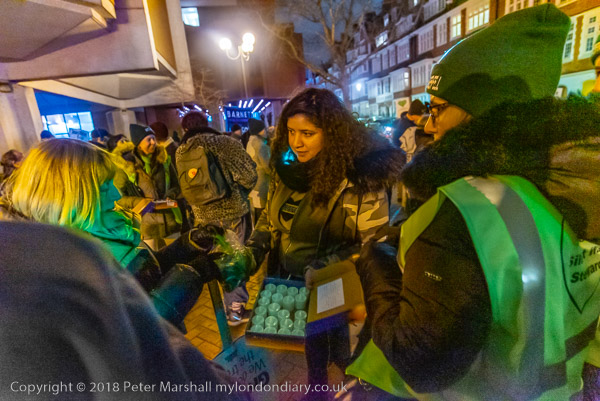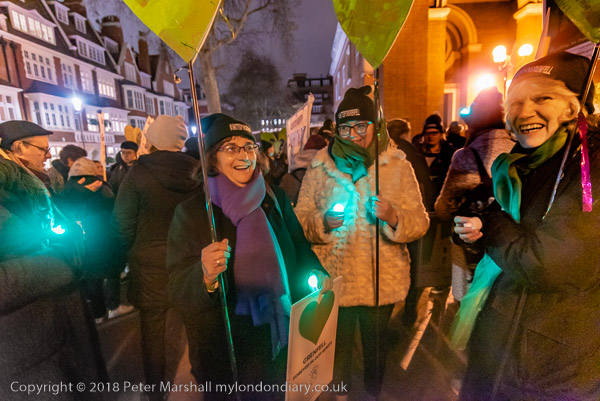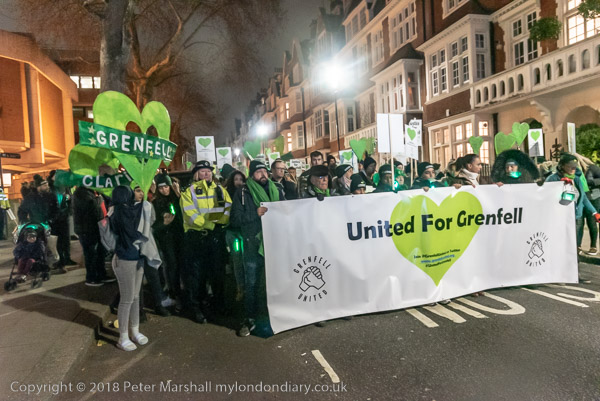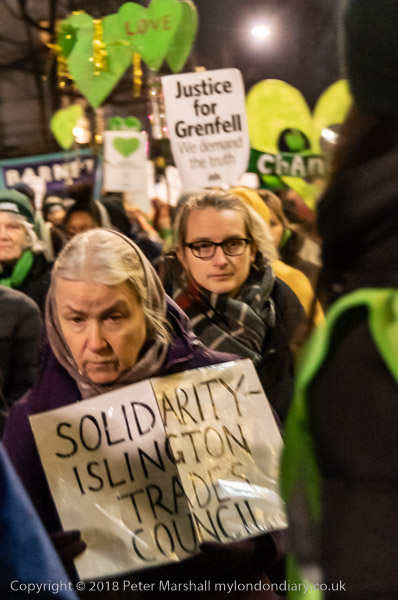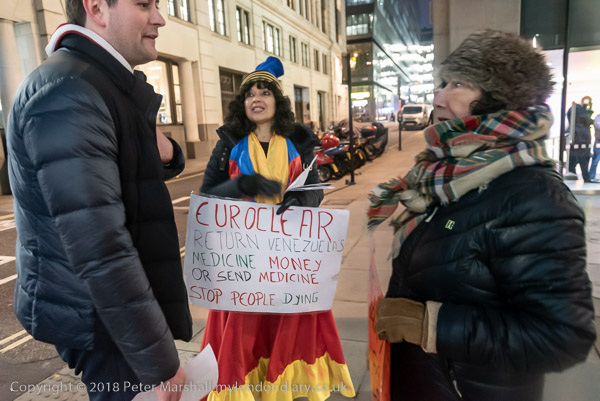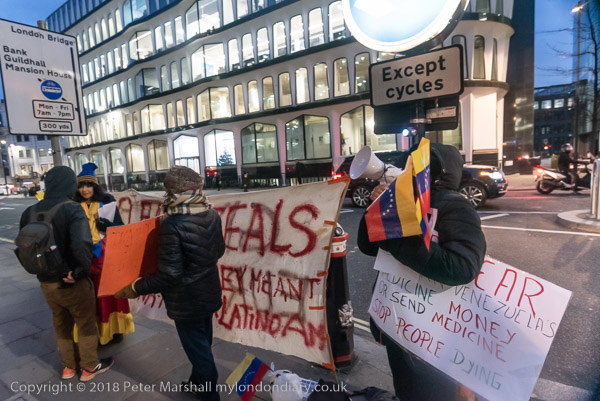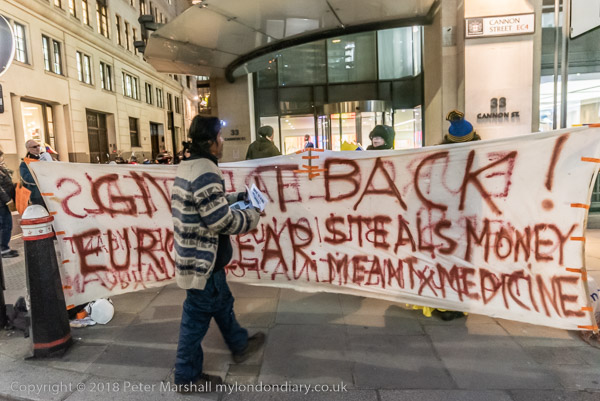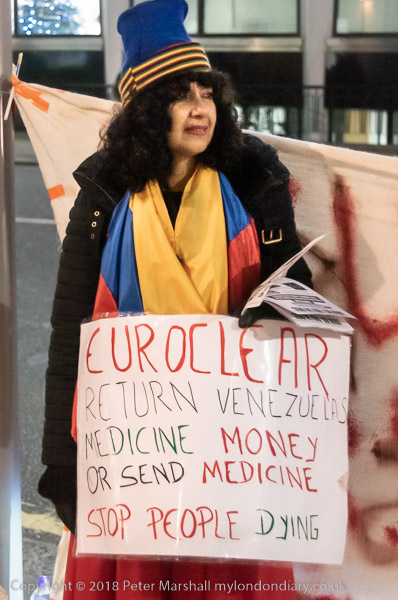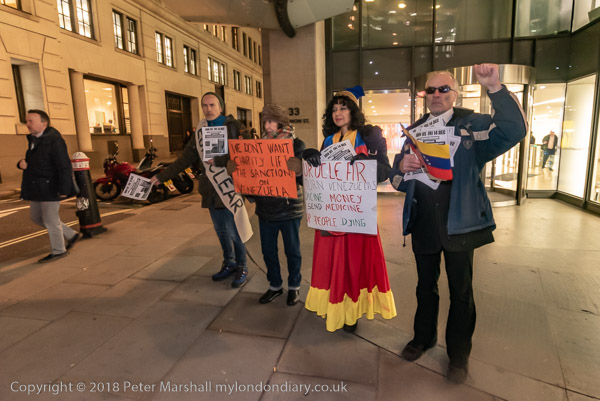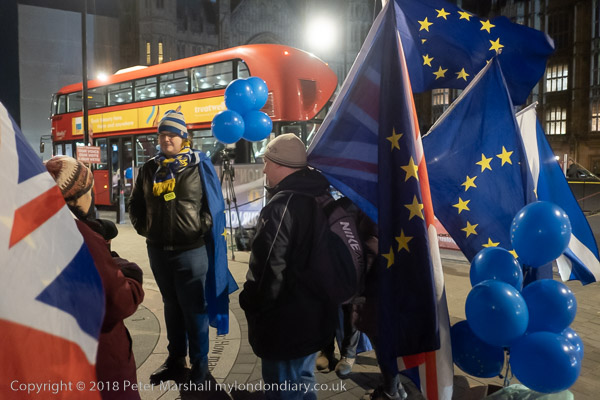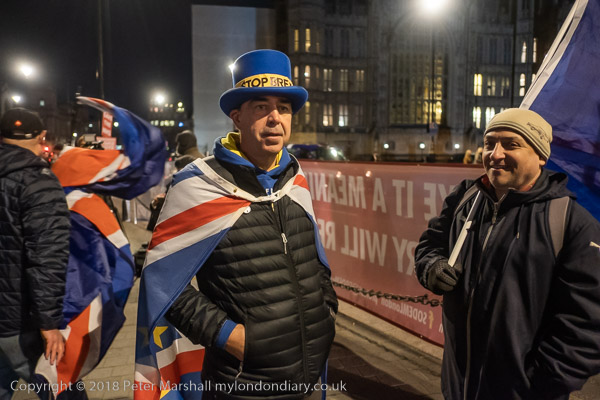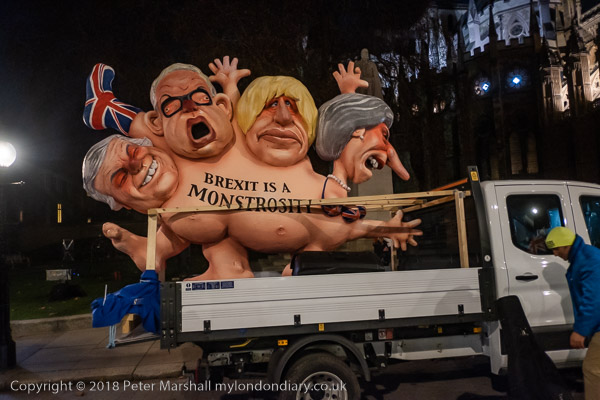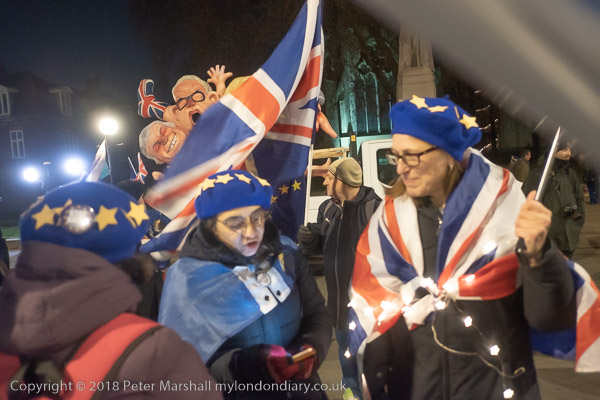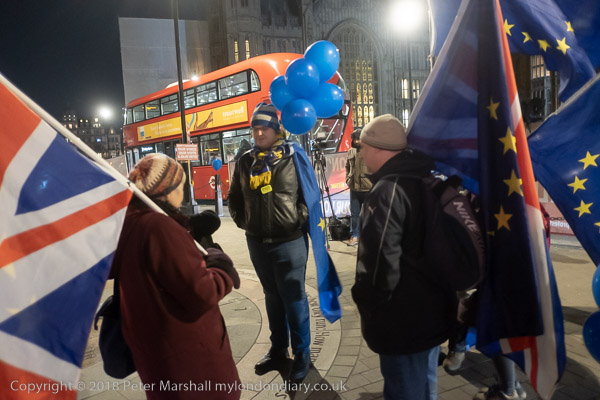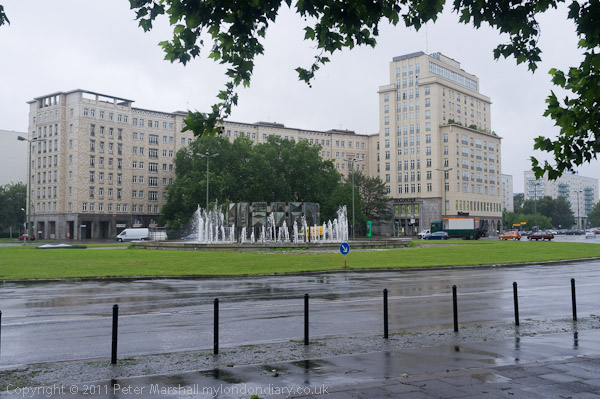
The next day it rained. All day, though sometimes the rain was lighter and sometimes it was heavier. It was perhaps appropriated weather to make our way down Karl-Marx-Allee, though at times the rain was a little too heavy to make photography easy, and a number of pictures were spoilt by raindrops on the filter in front of the 23mm lens of the Fuji 100x, despite wiping it before every exposure.
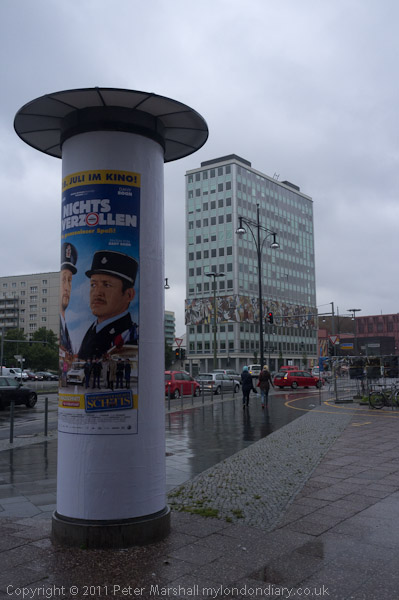
The street was rebuilt as a flagship monumental showcase for the East German regime in the 1950s, originally as Stalinallee, but renamed in 1961 after he fell from grace some years after his death. Moves to rename it after the wall fell have so far failed.
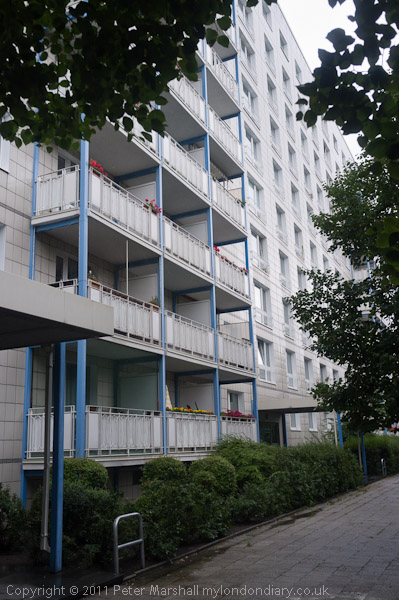
It is a truly massive street, roughly a hundred yards wide, and parts of it had some equally massive roadworks that we sometimes struggled around. Back in the old days it was no doubt always clear for the May Day military parade.
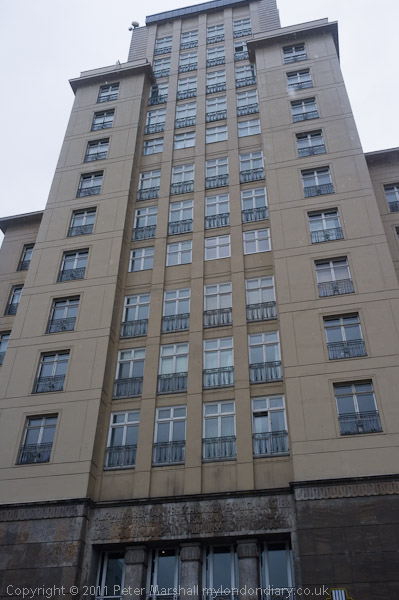
Both sides of the street are lined by buildings on an appropriate scale and built for a wide range of functions, including spacious and luxurious apartments for workers, shops, restaurants, cafés, a tourist hotel, and a vast cinema, all in the rather ponderous Russian modern classical style, not particularly to my taste.
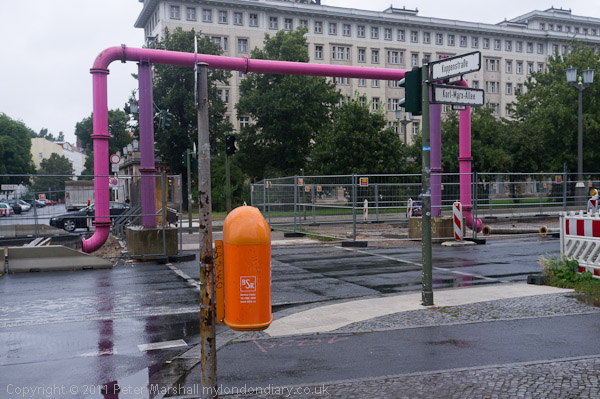
A curious note was added by some colorful above-ground pipework.
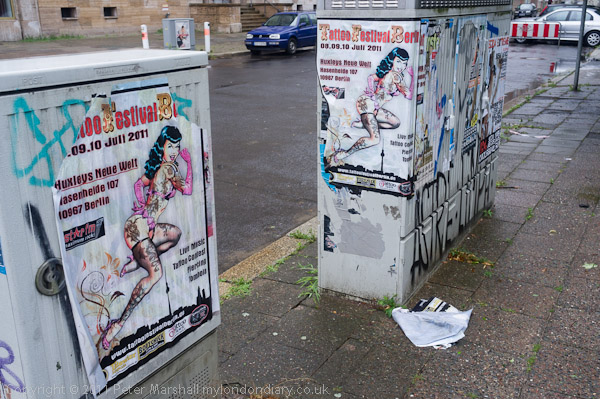
A couple of blocks near the start of our walk on the edge of the Alexanderplatz had some interesting decoation, with a huge Mexican style mural on the Haus des Lehrers (Teacher’s House – in the second picture from the top – but I made a better picture later in the week) and on the north corner of the street a huge metallic tribute to the Russian cosmonauts.
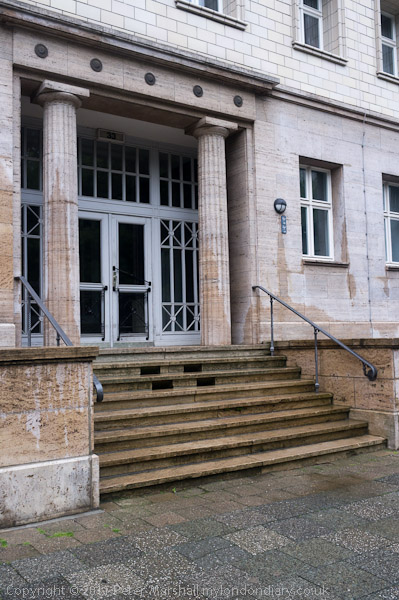
Had the weather been better I might have lingered more, and perhaps taken the Leica out of my bag to use a wider lens, but we hurried on, keen to reach our first café of the day for morning coffee and cake, though I preferred a beer. I did take rather more pictures than appear here, a little over 50 in total , but most are either family pictures or more pictures of the various buildings.
More about the café in Berlin 3.
Previous Berlin Post.
______________________________________________________
There are no adverts on this site and it receives no sponsorship, and I like to keep it that way. But it does take a considerable amount of my time and thought, and if you enjoy reading it, a small donation – perhaps the cost of a beer – would be appreciated.
My London Diary : London Photos : Hull : River Lea/Lee Valley : London’s Industrial Heritage
All photographs on this and my other sites, unless otherwise stated, are taken by and copyright of Peter Marshall, and are available for reproduction or can be bought as prints.
To order prints or reproduce images
________________________________________________________
